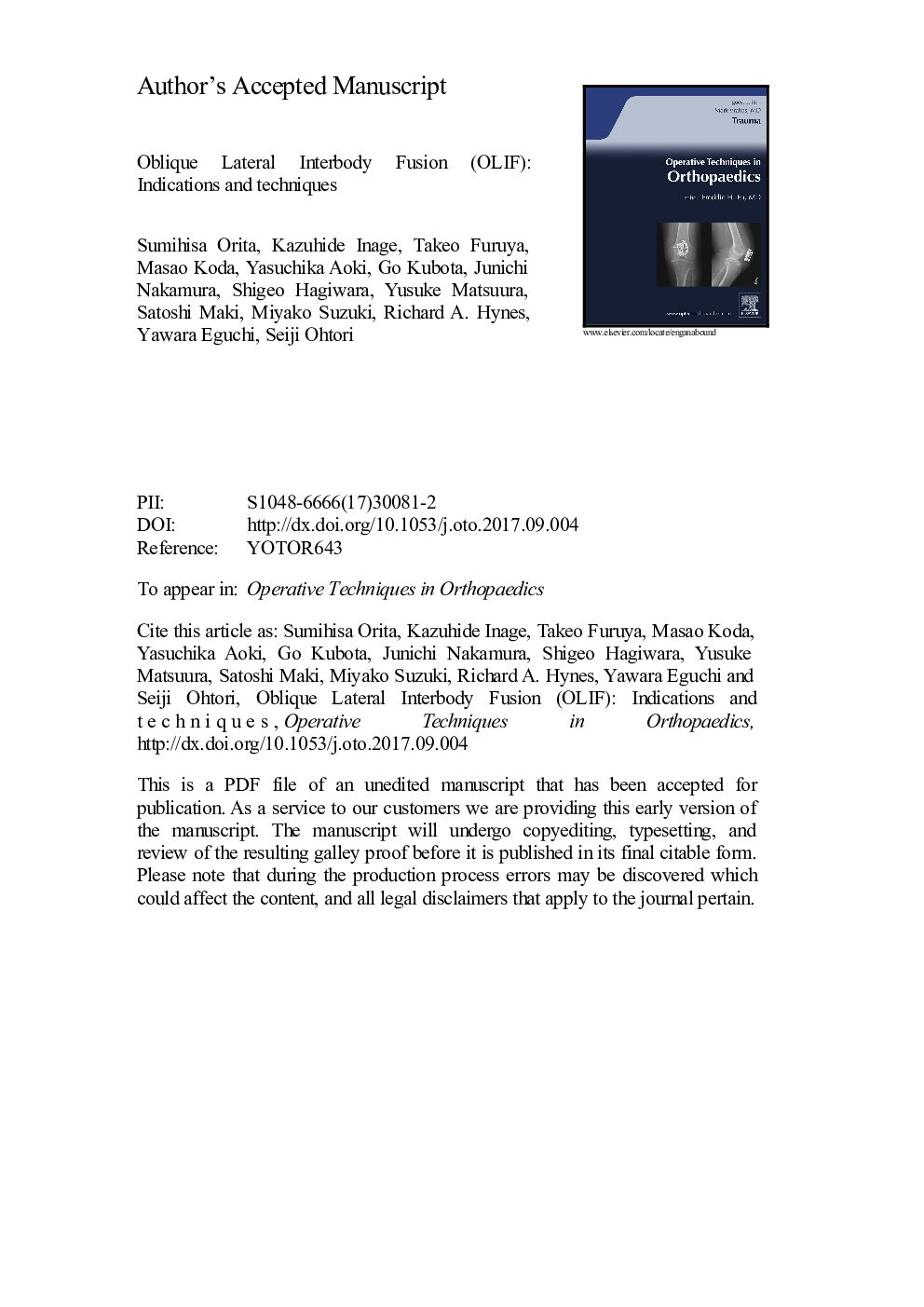| Article ID | Journal | Published Year | Pages | File Type |
|---|---|---|---|---|
| 8801808 | Operative Techniques in Orthopaedics | 2017 | 18 Pages |
Abstract
Lumbar lateral interbody fusion (LLIF) has been gaining popularity among the spine surgeons who deal with degenerative spinal diseases. LLIF achieves effective anterior interbody fusion in degenerative spinal pathologies such as spondylolisthesis, spondylolysis, discogenic lower back pain, adjacent segment disease, and degenerative kyphoscoliosis. Its curative effect is based on the mechanisms of indirect decompression, rigid stability, and alignment correction. Among several LLIF procedures, oblique lateral interbody fusion (OLIF) is a non-psoas-splitting approach which suppresses postoperative neural symptoms such as thigh pain, numbness, and motor weakness compared with psoas-splitting LLIF (XLIF). Although LLIF technique itself is relatively novel, the basic concept is based on traditional anterior interbody fusion. To avoid perioperative complications, thorough understanding of the procedures and anatomical features such as nerves, urinary tracts, and vessels are mandatory.
Keywords
Related Topics
Health Sciences
Medicine and Dentistry
Orthopedics, Sports Medicine and Rehabilitation
Authors
Sumihisa MD, PhD, Kazuhide MD, PhD, Takeo MD, PhD, Masao MD, PhD, Yasuchika MD, PhD, Go MD, PhD, Junichi MD, PhD, Yasuhiro MD, PhD, Yusuke MD, PhD, Satoshi MD, PhD, Miyako MD, PhD, Richard A. MD, PhD, Yawara MD, PhD, Seiji MD, PhD.,
